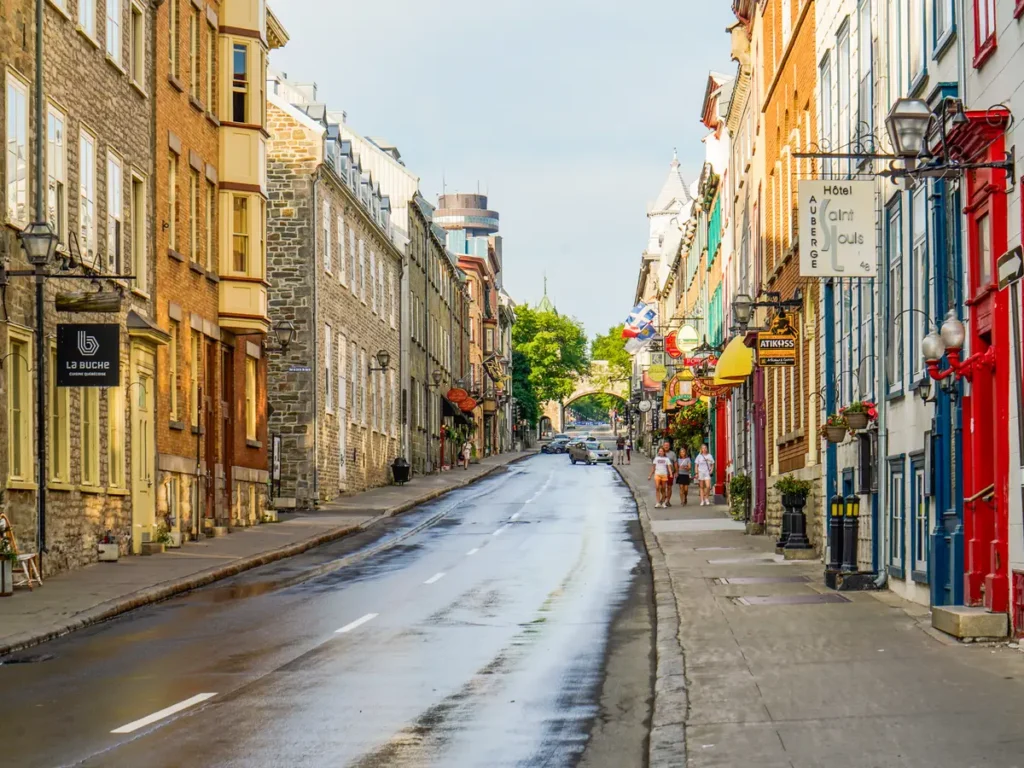
North America is not typically associated with cobblestone streets, centuries-old architecture, and French-speaking locals greeting you with a warm bonjour. Yet nestled in eastern Canada, the province of Québec offers a captivating European experience that surprises and delights visitors. With its old-world charm, rich heritage, and multicultural tapestry, Québec — especially its capital, Québec City — lets you feel like you’ve been transported to the heart of Europe without ever leaving the continent.
This article explores the enchanting essence of Québec’s streets, the stories whispered through its stone buildings, and the unmistakable sense of European flair that permeates every alleyway and corner café.
A Stroll Through Time in Old Québec
The heart of this European experience lies in Old Québec (Vieux-Québec), a UNESCO World Heritage Site and one of the most picturesque urban areas in North America. Surrounded by stone fortifications — the only remaining fortified city walls north of Mexico — Old Québec instantly transports you to another era. The streets are narrow and winding, paved with cobblestones and flanked by 17th- and 18th-century buildings, each with its own tale to tell.
As you meander through the Upper Town (Haute-Ville), perched on a cliff overlooking the St. Lawrence River, you’ll find the majestic Château Frontenac, an iconic hotel that dominates the skyline. Modeled after French Renaissance castles, this Fairmont hotel is more than just a place to stay — it’s a symbol of the city’s romantic past and present.
From there, take the Breakneck Stairs (Escalier Casse-Cou) down to Lower Town (Basse-Ville), where you’ll find Place Royale, one of the oldest settlements in North America. The square is flanked by old stone buildings that now house galleries, cafes, and boutiques. With French music drifting from open windows and street performers entertaining passersby, the ambiance feels unmistakably European.
French Language, French Soul
Québec’s European essence is more than architectural; it’s deeply embedded in its culture and identity. The province is overwhelmingly French-speaking, and the Québécois take immense pride in their language. Unlike bilingual cities such as Montreal, Québec City is unapologetically Francophone.
Visitors are often delighted by how easy it is to feel like they’re in a quaint French village. Street signs, menus, and public announcements are in French. Waiters greet you with a charming accent, and locals often switch to English with kindness and a smile when needed. It’s not just the language — it’s the lifestyle.
People linger over espresso at street cafés, stroll leisurely through markets, and enjoy long conversations over wine and cheese. Food is taken seriously here, and dining is more of a cultural ritual than a necessity. Québecers’ appreciation for the good life — la belle vie — mirrors the French philosophy of savoring every moment.
European Architecture on a Canadian Canvas
The architectural landscape of Québec is a visual feast. From stately mansions to humble stone homes, the city’s buildings reflect a variety of European influences, primarily French, but also British and even Spanish in some instances.
Walk down Rue Saint-Jean, one of the city’s oldest streets, and you’ll pass under stone archways and past ornate balconies and colorful shutters. The buildings often feature mansard roofs, intricate ironwork, and arched doorways — hallmarks of classic European design.
The Notre-Dame de Québec Basilica-Cathedral, originally built in 1647, is a stunning example of French colonial architecture, with a richly decorated interior that rivals any European cathedral. Nearby, the Séminaire de Québec, founded in 1663, reflects centuries of educational and religious heritage that shaped the province.
Not to be missed is the Citadel, a star-shaped fortress built by the British after they took control from the French in 1759. Even the presence of this military stronghold, with its changing of the guard ceremony, adds a European historical flavor to the cityscape.
Café Culture and Culinary Delights
Much like in Europe, life in Québec moves at a more deliberate pace — particularly when it comes to food and drink. Sidewalk cafés are abundant, offering not just sustenance but a front-row seat to the world passing by.
Order a café au lait and a buttery croissant, and sit back to watch the locals — artists, students, musicians — go about their day. The cafés often double as cultural hubs, where people gather to discuss politics, art, or simply enjoy the ambiance.
Québec’s cuisine is a fascinating blend of French sophistication and Canadian comfort. You’ll find French classics like coq au vin, bouillabaisse, and crêpes, but also uniquely Québécois creations such as poutine — crispy fries topped with cheese curds and rich gravy — and tourtière, a spiced meat pie traditionally served during the holidays.
Food festivals, farmer’s markets, and gourmet food tours provide ample opportunities to indulge in these culinary delights. The Marché du Vieux-Port, for instance, is a vibrant public market where you can sample local cheeses, wines, ciders, maple syrup, and charcuterie.
Seasonal Charms and Festivities
Every season in Québec brings its own magic, each enhancing the European ambiance in a unique way.
In autumn, the cobblestone streets are framed by golden leaves, and the city smells of roasted chestnuts and mulled wine. This is the perfect time for long walks, cozy cafés, and photography.
Winter turns Québec into a fairy-tale snow globe. With snowfall covering rooftops and icicles sparkling in the cold, the city’s European look is enhanced tenfold. The annual Québec Winter Carnival is the largest and oldest of its kind, complete with ice castles, parades, sleigh rides, and the beloved Bonhomme Carnaval — a snowman mascot.
Spring brings blooming flowers and a palpable sense of renewal. Locals emerge from the cold with renewed energy, flocking to open-air cafés and riverside parks. In summer, the city buzzes with festivals, including Festival d’été de Québec, a world-class music festival that attracts international artists and infuses the historic streets with rhythm and life.
The Romance of Wandering
There’s something inherently romantic about wandering through Québec’s streets. The slow pace invites introspection. The architecture sparks wonder. The music and laughter echoing from the restaurants and squares create an emotional resonance that lingers long after your visit.
Couples stroll hand in hand along the Dufferin Terrace, a scenic promenade overlooking the river, while artists paint street scenes just as they might in Paris or Montmartre. The Funiculaire du Vieux-Québec — a quaint inclined elevator connecting Upper and Lower Town — is as charming as it is practical, offering sweeping views and a unique experience that feels lifted from a European postcard.
Even solo travelers will find themselves enveloped by a sense of belonging. Locals are warm, curious, and proud of their heritage. They’ll gladly share stories about the city’s past, offer tips on hidden gems, or recommend a favorite local wine.
Beyond Québec City: A Province Steeped in Europe
While Québec City is the crown jewel of European charm, the entire province of Québec shares this aesthetic and cultural heritage. Montreal, the largest city, blends modern innovation with historic districts like Old Montreal, where cobblestone streets, horse-drawn carriages, and Gothic Revival buildings feel straight out of Europe.
Outside the urban centers, picturesque towns such as Baie-Saint-Paul, Tadoussac, and Charlevoix continue the story. Artists’ colonies, centuries-old churches, and French-style inns await discovery along scenic drives that wind through forests, mountains, and along the mighty St. Lawrence River.
Final Thoughts: A Passport-Free European Escape
In a world where long-haul travel can be costly, time-consuming, and complex, Québec offers a perfect solution: the enchantment of Europe without the jet lag. Whether you’re captivated by history, seduced by gastronomy, or simply seeking beauty and serenity, this Canadian province delivers in spades.
The experience of walking through Québec’s charming streets — hearing French melodies in the air, breathing in the scent of fresh pastries, and marveling at centuries-old stonework — is nothing short of transformative. It’s a reminder that the past is not as distant as we think, and that sometimes, the most extraordinary journeys are closer than we imagine.
So lace up your walking shoes, pack your sense of wonder, and prepare to fall in love. Because in Québec, Europe isn’t across the ocean — it’s just around the corner.




